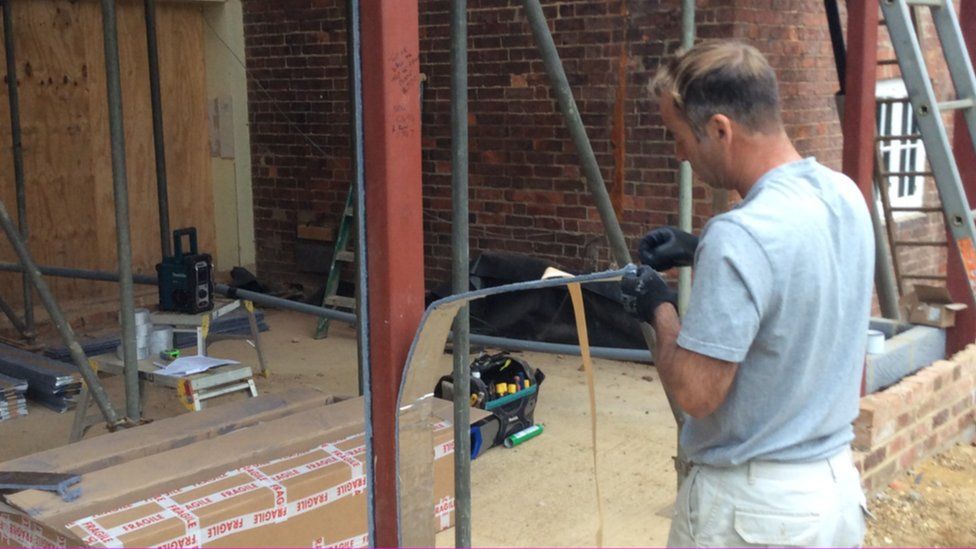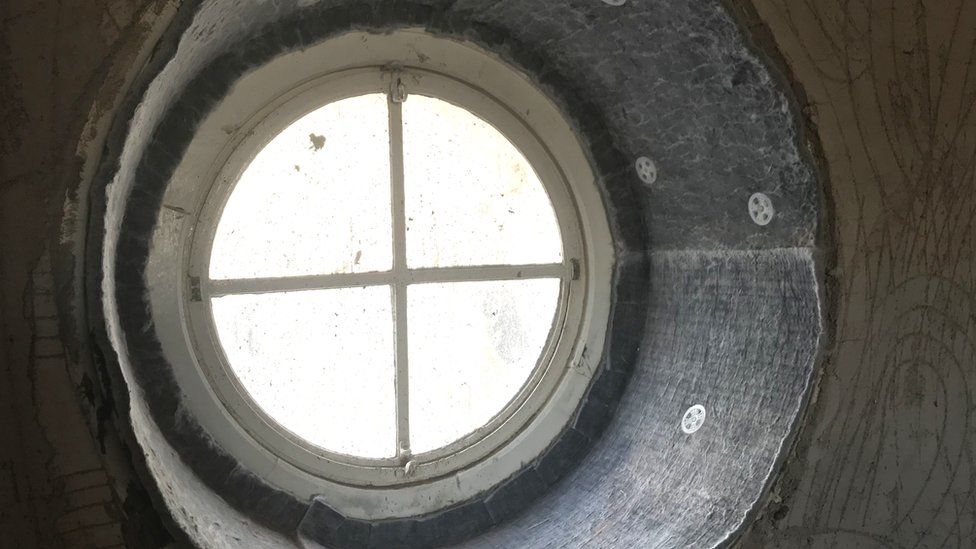Is there a better way to insulate our draughty homes?

It has insulated components on rovers sent to Mars, extracted toxic contaminants from water, some even speculate that the US military has put it inside nuclear warheads.
But it could be just the thing for your bay windows.
Aerogel is often described as the most effective insulating material known to science.
While aerogel strips or panels have been used in buildings for decades, this type of insulation remains a little-known and rather expensive option for those aiming to reduce heat loss from their homes.
Given that British houses are generally pretty poorly insulated, yet we live in an age when energy efficiency is paramount, could aerogel be about to find a bigger niche in the construction and retrofit industries?
In the late 1920s or early 1930s – no-one is quite sure – two chemical engineers in the US came up with a way of removing liquid from a silica gel substance while leaving behind an ultralight, highly porous structure that one of the engineers, Steven Kistler, christened aerogel.
Imagine a foam but an extraordinarily low-density foam riddled with microscopic pores – some aerogels are around 99% air. Nicknames for aerogel include “frozen smoke” and in pictures it can look like an ethereal half-gas, half-solid slice of matter.
But the intricate structure and large volume of air inside it mean that aerogel is an amazingly good insulator. It has found its way into a surprising variety of buildings.
Aerogel insulation has been used in the roof of a former church in Belfast called The Duncairn, now an arts centre, as well as a façade for a building on Pimlico Road in London, and the ceiling of a banker’s residence overlooking Lake Geneva in Switzerland.
“You could have the whole house done in aerogel, we have done it,” says Liam Brown, managing director of Enviroform, a Northern Ireland-based company that supplied the insulation for these projects.
Enviroform’s products use aerogel insulation made by Aspen Aerogels in the US. According to Aspen Aerogels’ website, the material combines silica aerogel with a reinforcing fibre in a blanket-like composite.
Aspen Aerogels did not respond to a BBC request for comment.

Where space is at a premium, a 10mm layer of this aerogel insulation fixed to a property’s walls could reduce heat loss through those walls by two thirds, says Mr Brown.
The cost of 10mm thick aerogel insulation in the UK is around £50 per sq m, Mr Brown notes, which makes it roughly five times as expensive as the equivalent 30mm rigid board insulation. The aerogel option is thinner and more flexible, though.
For many people, Mr Brown says, aerogel is best suited to features of a building that threaten to act as thermal bridges – points where heat will easily escape, such as the heat-conducting metal posts around a window unit, aluminium door or window frames, or steel beams, for example.
It might also be useful for insulating floors where digging up or disturbing an existing floor would be too disruptive.
“We can go in with a 10mm or 20mm panel, insulate the floor, and walk out again,” says Mr Brown.
Aerogel is a “fascinating” material, says Jonathan Bloor at the University of Plymouth, who has studied aerogel for water decontamination applications.
It works so well as an insulator because heat finds it difficult to move across all the air pockets in aerogel that block its path. The heat must instead take a labyrinthine route through the minimal solid structure of the material, says Dr Bloor.

“It’s not a direct line, it’s kind of weaving its way through,” he explains.
Since aerogel insulation can, in principle, whack up the energy efficiency of buildings without the need to make walls and ceilings much thicker, there could be rising interest in it from people keen to retrofit their properties, suggests Dr Bloor.
If this market were to expand, that in turn could prompt a boost in production and bring the cost down.
Cost really is the key barrier to the wider use of aerogel as a building insulation material, suggests senior scientist at the Passive House Institute, Berthold Kaufmann.
“[Expanded polystyrene] or mineral wool, these will always be less expensive,” he says.
Take a large heritage building where very thick insulation might drastically alter the aesthetics of the property. Aerogel provides a slim-line alternative – but one that some architects might say is simply too costly.
“And so they do not do anything. This is what I fear,” says Dr Kaufmann.
All the same, he says that aerogel has some really useful applications in, for example, domestic properties where you need to raise and insulate a floor but don’t want to lower the ceiling height too much.


Cheaper insulation could be used elsewhere in the building where space doesn’t really matter. Again, it’s a case of using aerogel for a specific purpose where the cost becomes justifiable.
Dr Kaufmann notes that there are alternatives, such as vacuum insulation panels, which are extremely effective insulators, though they might be fragile, more rigid and not much cheaper.
“Hopefully the price [of aerogel insulation] will go down and it will be used more frequently,” says Dr Kaufmann. “But it will not be a material for everyday use.”
Mr Brown acknowledges that aerogel insulation is still a “very, very small” part of the insulation market. But many people are still not aware it is even an option, he notes.
“If you’re doing a full-scale retrofit, aerogel should be needed somewhere,” he argues, noting how properly insulating the steel posts in the wall around an expensive window frame, for instance, can help prevent condensation – a key driver of mould and other problems.
No matter what insulation you use, cracking down on those thermal bridges is really important since they can account for around 30% of heat loss in a home, according to the Energy Savings Trust.
As Mr Brown puts it, “Would you buy a bucket with a hole in it?”
